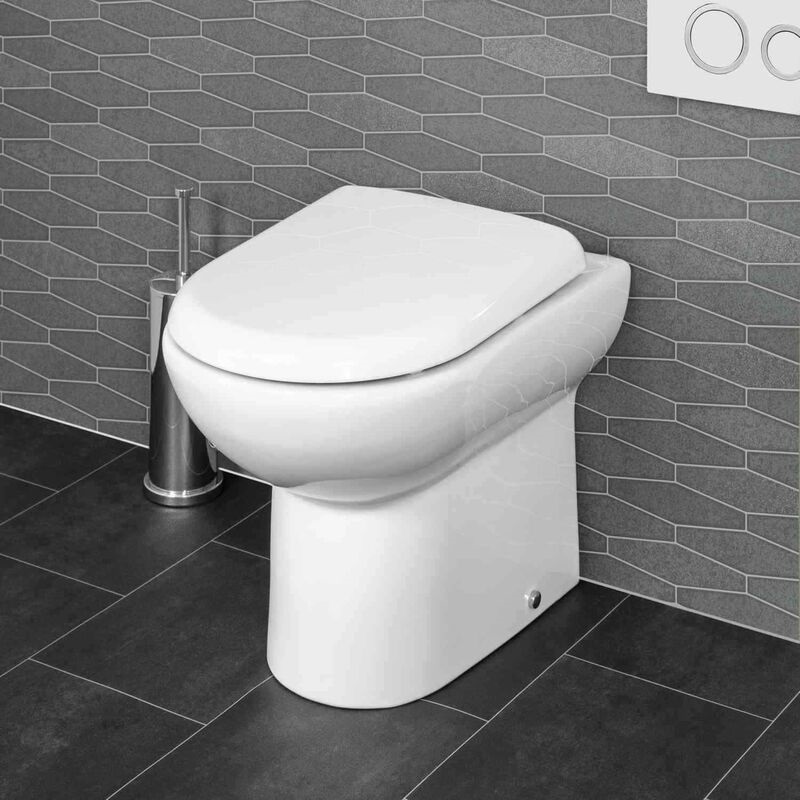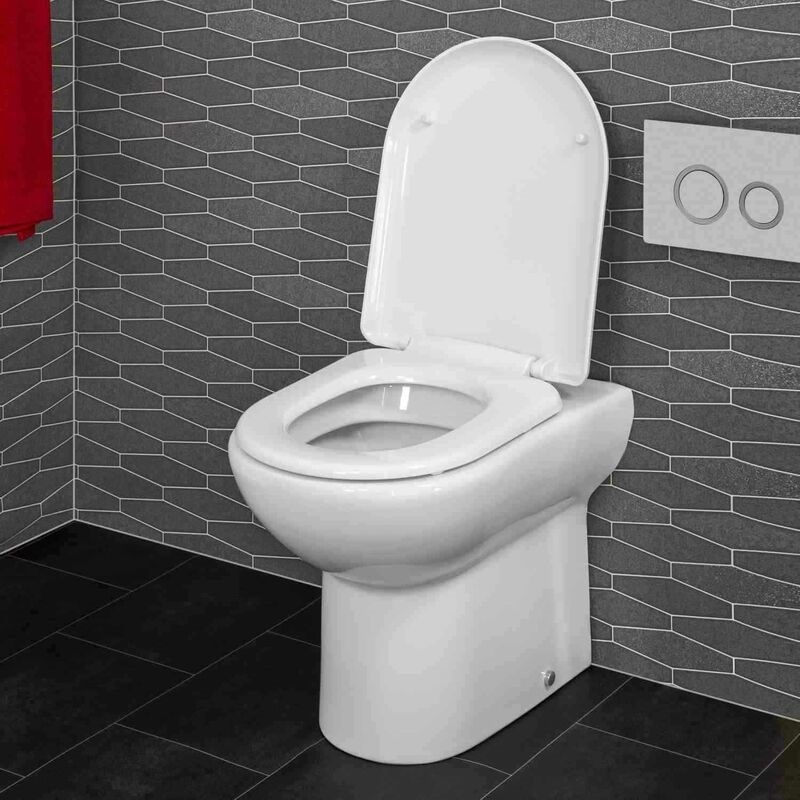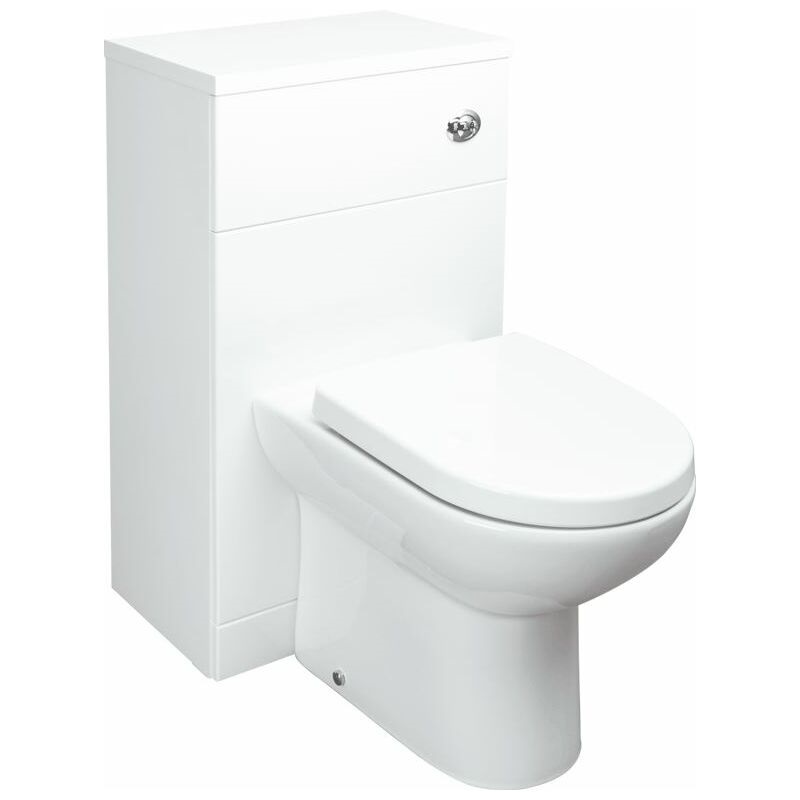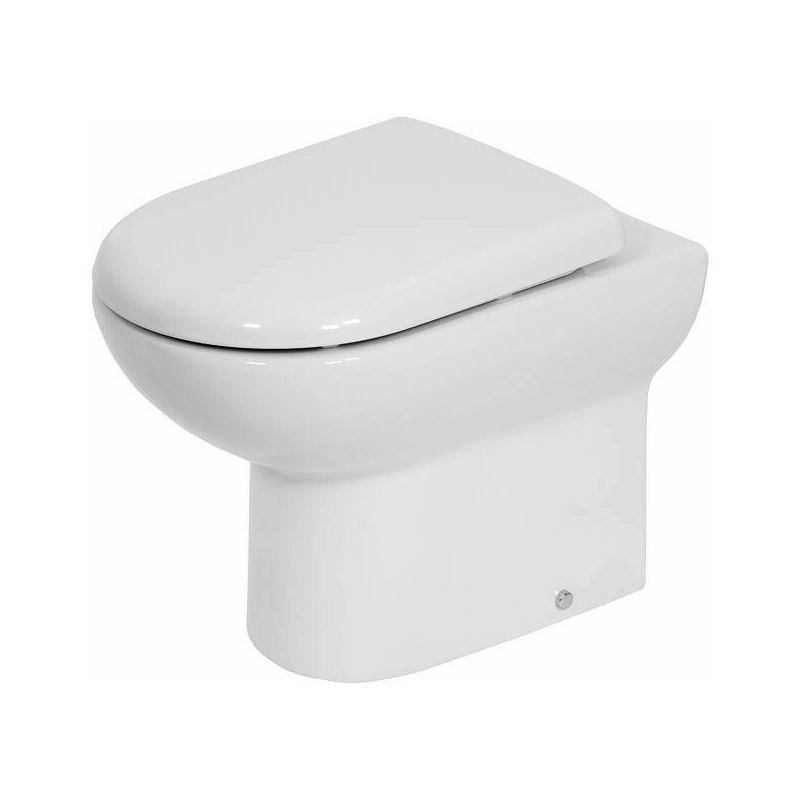I believe most people know about split toilets and connected toilets, while many beautiful bathrooms may not be well known for their wall mounted and non water tank integrated toilets. In fact, these slightly personalized toilets are quite impressive in terms of design and user experience. It is recommended to try out children’s shoes with sufficient planning, and you will have a completely different feeling.
1、 Divided by overall structure
According to the overall structure, toilets can be divided into split type, connected type, wall mounted type, and non water tank toilet.
1. Split type
Split type toilet is a toilet with a separate water tank and base. Due to the separate firing of the water tank and base, it does not waste firing space, and the molding rate can reach over 90%, so the price is relatively low. Split type toilets generally use flush type drainage, with high water level, high flushing force, and relatively less clogging. However, the flushing noise is also higher than other types of toilets. The split toilet has a more traditional design and appearance. At the same time, it occupies a large space and is not easy to lean against the wall. The gap between the water tank and the base will form a sanitary blind corner, which is difficult to manage, easy to accommodate stains and even produce mold, affecting aesthetics and hygiene. Independent water tanks also have higher requirements for water components, such as poor quality of water components and aging of sealing rings, which can lead to water leakage at the connection of the water tank. Advantages: Low price, strong impulse, and not easily clogged. Disadvantages: The appearance is average, takes up a lot of space, has loud flushing noise, is not easy to clean, and there is a risk of water leakage in the water tank. Applicable to households: Consumers with limited budgets and low requirements for toilet styles, and low frequency of use.
2. Connected type
The connected toilet is an improved product of the split toilet, and its water tank and base are fired as a whole and cannot be separated separately. Due to the increase in firing volume, its molding rate is relatively low, only reaching 60% -70%, so the price is higher compared to the split toilet. Connected toilets generally use a siphon type drainage system, with low water level and low flushing noise. There is no gap between the water tank and the base, making it easy to clean. There are many styles to choose from, which can meet different decoration styles and is now the mainstream type of toilet. Advantages: Various styles, easy to clean, and low flushing noise. Disadvantages: Siphon drainage is relatively water intensive and prone to blockage. Applicable to households: Consumers who have certain requirements for the shape and function of the toilet.
3. Wall mounted
The wall mounted toilet originated in European countries and is a combination of concealed water tanks and toilets. In recent years, it has gradually become popular in China. A fake wall should be built behind the wall mounted toilet, and all pipelines should be sealed in the fake wall, which makes the installation cost relatively high. Saving space and facilitating cleaning are both its advantages. At the same time, with the wall barrier, the flushing noise will also be significantly reduced. Wall mounted toilets are most suitable for toilets with wall drainage (the toilet’s drain outlet is on the wall), and some new residential areas that use wall drainage can be easily installed. If the toilet is ground drainage, it is necessary to change the direction of the drainage pipe or use appliances like Geberit’s S elbow to guide the drainage, which is relatively troublesome to install. As for stability, the steel bracket is the force acting on the wall mounted toilet, not the toilet, so there is no need to worry as long as the construction is done properly. Due to the embedded nature of the water tank, wall mounted toilets have strict quality requirements for the water tank and water components, resulting in a high overall price. At the same time, the water tank entering the wall needs to be accurately installed, and it is best to be operated by professional technical personnel. Advantages: Space saving, convenient displacement, beautiful appearance, and low flushing noise. Disadvantages: High price, high requirements for quality and installation. Applicable to families: consumers who pursue high-quality life or Minimalism style can choose.
4. No water tank toilet
The non water tank toilet is a new type of water-saving toilet that does not have a water tank and is directly flushed with urban tap water. This kind of toilet makes full use of the water pressure of urban tap water and applies the principle of Fluid mechanics to complete the flushing, which is more water-saving and has certain requirements for water pressure (most cities have no problems). Due to the lack of a water tank, it not only saves space but also avoids water pollution and backflow problems in the tank, making it relatively hygienic and easy to clean. The non water tank toilet is usually designed as an integrated unit, with a luxurious and elegant appearance, while integrating many technological elements (such as an intelligent enhanced power flushing system, automatic opening and closing of the toilet cover based on microwave induction, touch screen remote control, mobile sanitary washer that can adjust water temperature, etc.), which has a complete range of functions and can provide users with a comprehensive comfortable experience. Therefore, large brand toilets without water tanks are usually expensive and suitable for families with luxurious decoration. Advantages: The section has a novel and beautiful appearance, saves space, saves water and sanitation, has complete functions, and a great comprehensive experience. Disadvantages: High quality requirements, not suitable for areas with water shortages (frequent water shutdowns) or low water pressure, and expensive prices. Suitable for families: Consumers with sufficient budgets and pursuing comprehensive bathroom enjoyment.
2、 Divided by pollution discharge method
The sewage discharge method of toilets is also a consideration in the selection process, mainly divided into floor mounted toilets and wall mounted toilets. The above wall mounted toilets are suitable for wall mounted toilets.
1. Floor mounted
The floor mounted toilet is our most common type of toilet, with a downward drainage method. By embedding drainage pipes on the ground, the dirt is discharged. Split and connected toilets belong to this type. Its advantages are convenient installation and a wide range of toilet styles to choose from. The disadvantage is that since the main drainage pipe runs through the floor slab, the sound of neighbors flushing water is often heard in the bathroom. The leakage of pipes upstairs may also affect residents downstairs, affecting their normal lives.
2. Wall mounted
The wall mounted toilet has a drainage outlet on the wall, and some new buildings have begun to adopt this drainage method. The wall drainage method has been changed from the building drainage structure. The pipes do not pass through the floor slab, but are laid horizontally on the same floor, and finally concentrated on the “tee” of the sewer pipe for drainage. This method will not encounter the awkward problem of “flushing water at home and listening to it at home” caused by traditional drainage, nor will it cause the embarrassment of water leakage between the upper and lower levels. Since there is no need to penetrate the floor slab, there will be no large drainage pipes in the bathroom, and users no longer need to do specialized concealed works to hide the sewer pipes.









